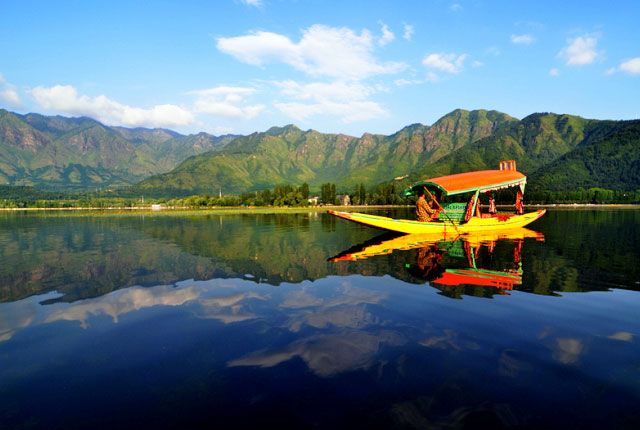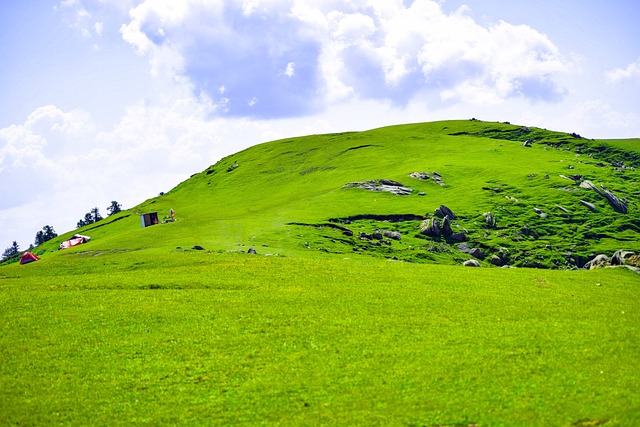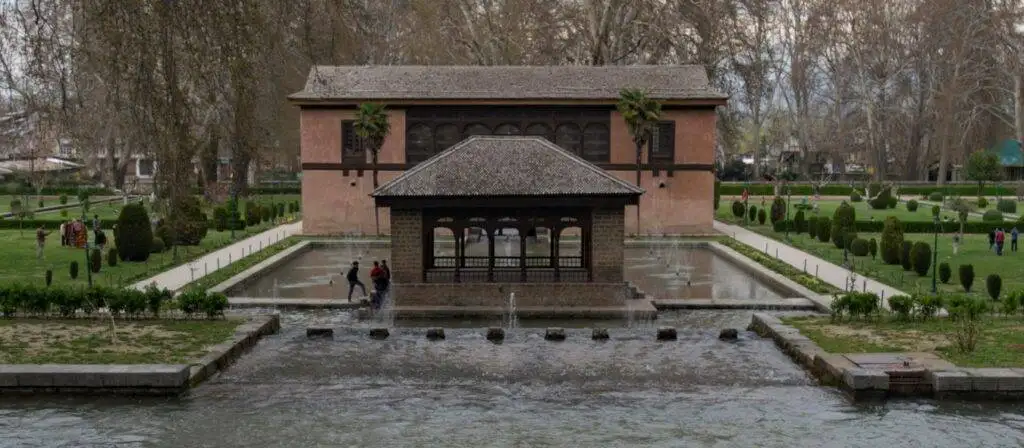
Achabal : Kashmir’s Heritage and Nature
Table of Contents
ToggleOverview
Achabal is a small, quiet town sitting in the mystical valley of Kashmir. With majestic landscapes, historical riches, and serene surroundings, the place does capture visitors. Achabal is known for its Mughal gardens, natural springs, and its cultural heritage. Thus, this is one of the least known jewels in the region of Kashmir. Though it is often overshadowed by more popular destinations in Jammu and Kashmir, Achabal offers the perfect mix of natural beauty, historical significance, and cultural charm, which makes it an essential stop on anyone’s itinerary to Kashmir Valley.
This blog will take you through history, culture, scenic attractions, and hidden gems of Achabal on an exhaustive tour to explain all this to you on one go and help discover the beautiful town in Kashmir’s heart. It will feel different irrespective of how one might be interested, into history, nature, or peace-seeking traveler.

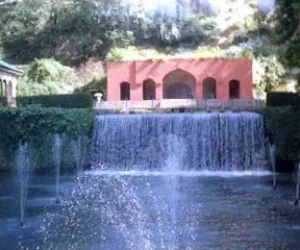
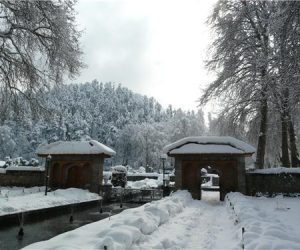


Achabal: Brief History
Achabal is a small town deep into historical roots, which has been an important constituent of the rich cultural and political life of Kashmir for centuries. Probably, the most iconic feature of Achabal is the Mughal garden called Achabal Gardens, dating back to the 17th century and conceived by the Emperor Jahangir. Great architecture emulates those who epitomize architectural design-just the Mughal emperors, who were addicted to the beauty of nature in Kashmir, made the landscape of Achabal look a perfect site for one of their great gardens.
Historic Importance While the historic importance of Achabal does not end here. A Mauryan, Kushan, and Gupta dynasty had ruled this region and left their marks in the cultural landscape of this region. In the 16th century after the Mughals came into power, the town was made a site of architectural splendor as compared to which the Achabal Garden stands like a crown.
Over the years, its strategic location has made it a very significant juncture of trade as well as cultural exchange of the Anantnag district. For these reasons alone, Achabal presents a rich mix of cultural heritage that makes this place an interesting one to visit.
Achabal Gardens: Masterpiece of Mughal architecture in nature itself
Probably the most iconic feature of this quaint town would be the Achabal Gardens. Constructed by Emperor Jahangir for his queen, Nur Jahan, in the early 17th century, these gardens are the epitome of Persian-style Mughal gardens that seamlessly integrate art and nature. The garden is located on the banks of a natural spring, and refreshing water flows through intricate canals, cascading over marble fountains, creating an atmosphere of serenity and peace.
The Achabal Gardens are well-arranged in a terraced layout, full of water features and lush greenery, accompanied by floral decorations and would be the perfect place to take a quiet walk or just sit and take in the beauty of nature. It is divided into many levels, with every level showing different styles of landscaping, from ornamental flowers and trees to vast grassy lawns. The central water fountain fed by the natural spring is placed in the middle of the garden and generates soothing ambiance.
Achabal Garden differs from others, for it takes the contours of the valley and blurs them with designs of Mughal periods. Blooms, trees, and shrubs create a contrasting visual feast with mountains surrounding to generate ultimate feasts for eyes. It produces an ideal abode of serenity and beauty as it murmurs with the sweet sound created by blowing wind over it. And therefore, Achabal Gardens remain a silent abode far from this world’s madness for any passionate photographer or even for any person interested in the beauty of nature alone.
Getting to Know Nature at Achabal: An Experience Never-to-Be- Forgotten
Although the sites of historical importance like Achabal Gardens attract many visitors, it is the beauty of nature that makes a visit to this town a destination for all nature lovers. The view of snow-capped mountains, nestled in the lush green valley of Kashmir, makes this place offer some of the best landscapes of the region.
The town is known for freshwater springs used to feed the fountains, as well as the fountains in the gardens that have made it a peaceful retreat for everyone who might want to appreciate natural beauty. These springs are medicinally believed to have water that promotes life and well-being as well as being integral to culture in the region. Many minor streams run through the towns and the spring water is kept pure and a source of life.
Achabal offers many attractions for nature lovers, especially when it comes to the diversity in flora and fauna. This valley provides all types of plant species, including conifers, pines, fruit trees, and a colourful variety of wildflowers, which can paint the entire landscape in their hues. Silent tracks of trekking, provided by surrounding forests, which make part of the grand valley of Kashmir, give you a feel of crossing natural wonders in this space. From the beautiful tracks of green forest walks to unwinding near the springs, you will surely love the beauty of Achabal.
Culture and Local Traditions: A Tapestry of Kashmiri Heritage
Achabal is not only a beautiful place but also a town full of cultural heritage. Rich Kashmiri traditions are evident in the festivals, handicrafts, cuisine, and daily life of this region. The unique blending of Kashmiri culture with the influences of Mughal rule has created a cultural landscape that can be explored by visitors in various ways.
Kashmiri Cuisine: The authentic Kashmiri cuisine has to be savored when visiting Achabal and one can relish all such local eatables being presented in the local restaurants. Kashmiri food is highly spiced, richly aromatic with herbs, and justly prepared to release the flavors of the very tenderly cooked meats, rice, and vegetables. The must-try dishes include Rogan Josh, spicy lamb curry; Dum Aloo, potato curry; Yakhni, yogurt-based mutton stew; and Kashmiri Wazwan, which is a multi-course meal often served at festivals and gatherings.
Handicrafts and Arts: Achabal is also a place for Kashmiri handicrafts. The place has excellent workmanship, and the visitors can buy many made products, including Kashmir carpets, papier-mâché, Pashmina shawl, and embroidery textiles of the region. The products were perfect ways to carry some chunk of Kashmiri culture as well as to help local artisans back home.
Festivals and Events: Achabal’s cultural calendar is rich in religious and seasonal festivals, which illustrate the local people’s lifestyle. Kashmiri New Year or Navroz is one of the main festivals in Achabal. Locals celebrate Navroz with feasts, traditional music, and dance together. The Eid-ul-Fitr and Eid-ul-Adha are celebrated with huge enthusiasm by the locals of Achabal. Special prayers, feasts, and other cultural activities are performed.
People at Achabal always remain well attached to the cultures as well as religious backgrounds which are to be achieved within all the changing seasons with every architecture, ritual, or ceremony.
Best Time to Visit Achabal: Tasting Seasons
There isn’t any specific season required to visit Achabal, as it can be explored whichever season you want since with every season comes an undeniable charm.
Spring (March to May): Spring is the best time of the year to visit Achabal. The gardens are full of flowers, and the mild weather is ideal for a view of the place as well as outdoor activities. The green surroundings with flower colors add it to photographer’s paradise. Cool breeze and soft sunlight make this the ideal atmosphere to enjoy and relax for the visitor.
Summer (June to August): If you want to escape the scorching heat of the plains, Achabal is a good destination for the summer season. Summer months see pleasant temperatures and are ideal for nature walks, strolling in gardens, and hiking through surrounding forests. Its location at high altitudes keeps the place refreshed in comparison with hot climates of lower regions.
Autumn (September to November): The fall season is also one of the best seasons to visit Achabal as the valley is adorned with the golden and amber color of the leaves. The valley has the crisp air, along with beautiful fall foliage that is picture-perfect for nature lovers. The weather remains relatively mild, making it comfortable to carry out outdoor activities and sightseeing.
Winter (December to February): Winter season brings a spell of wonderland to Achabal in all its aspects. The clad mountains with frosted tree adorn the whole town with something magical. For those having a preference for snow it is time to visit for winters. For those who get a little less crowded due to winters, Achabal happens to provide a peaceful refuge amidst a snow-covered sceneries. During this time one can have ample opportunities of skiing and even snowshoeing near the mountains.
Nearby Attractions and Day Trips from Achabal
Achabal is strategically located near some other popular places in Kashmir and thus is a fabulous base for day trips and excursions. Some nearby attractions include:
Pahalgam: Pahalgam is another beautiful place that is just a short ride from Achabal. There are lush landscapes, trails for trekking, and the Lidder River makes the place so famous. Furthermore, Pahalgam is also an important place, as it is not so far from the Amarnath Cave, one of the important pilgrimage places of Hindus.
Anantnag: Anantnag town is known for religious and historical places, one of the oldest temples from the 8th century old – the Martand Sun Temple that speaks volumes about ancient architectural excellence in Kashmir.
Srinagar: Srinagar, the summer capital of Jammu and Kashmir is only 70 kilometers away from Achabal. Some of the attractions here are Dal Lake, Nigeen Lake, Shankaracharya Temple, and the Mughal Gardens. Any traveler to Achabal must visit Srinagar.
How to Reach Achabal: Easy Travel Roads
Achabal is well connected to other places in Kashmir. So reaching Achabal is not a difficult task.
By Air: The nearest airport to reach Achabal is Sheikh-ul-Alam International Airport located in Srinagar. Taxi or bus service would be there from the airport from Srinagar. Direct flights are available from Srinagar to Delhi, Mumbai, and Jammu
By Train: The nearest railway station is at Jammu, 90 kilometers from Achabal. On taking a taxi or in the bus from Jammu, one can reach this beautiful destination.
By Road: Achabal is very well connected by road to Srinagar and other parts of Kashmir. The drive from Srinagar to Achabal is a nice scenic route, beautiful valley and mountain view along the way.
Conclusion
It’s just one of those hidden treasures of Kashmir known for the wonderful history, beauty, and rich culture. You could study the grandeur of Mughal gardens, take a trek through some scenic landscapes, or be engrossed in local traditions-all in the rich treasure trove that is Achabal.
It is the serenity of its environment, beautiful and picturesque surroundings, and warm hospitality that its people can offer. So for all those who seek peace and tranquility, Achabal will make the perfect destination in case of a trip to Kashmir-it’s just like heaven within the heart of the Kashmir Valley.
How to book Kashmir tour?
Contact a travel agency that specializes in Kashmir tours. You can reach out to the following for assistance:
- Phone:
- +91 7889 655596
- +91 7006 891267
- Email:
Inquire about tour packages, itineraries, and pricing, and confirm your booking for a memorable winter experience!
People Also Ask
What is Achabal known for?
Achabal is renowned for its lush gardens, historic significance, and scenic beauty. It is famous for the Achabal Garden, a Mughal-style garden built by Mughal Emperor Jahangir in the 16th century.
Where is Achabal located?
Achabal is located in the Anantnag district of Jammu and Kashmir, India. It is approximately 12 kilometers from the town of Anantnag.
How do I reach Achabal?
Achabal can be accessed via road from Srinagar or Anantnag. The nearest airport is Sheikh ul-Alam International Airport in Srinagar. The nearest railway station is also in Anantnag.
What are the famous tourist attractions in Achabal?
The Achabal Garden, the scenic landscape, and nearby attractions such as the Verinag Spring and the historic monuments make Achabal a popular tourist destination.
When is the best time to visit Achabal?
The best time to visit Achabal is during the spring (March to May) and summer (June to August) months, when the weather is pleasant.
What is the history of Achabal Garden?
Achabal Garden was built in the 16th century by Mughal Emperor Jahangir. It is a Persian-style garden and is a great example of Mughal architecture and horticulture.
Is Achabal Garden open to tourists?
Yes, Achabal Garden is open to tourists throughout the year, with an entrance fee required.
What activities can I do in Achabal?
Visitors can enjoy sightseeing, nature walks, photography, and picnics in the beautiful Achabal Garden. The surrounding hills offer opportunities for trekking and exploration.
Are there any hotels in Achabal?
There are several hotels and guesthouses in Achabal and nearby Anantnag, providing a range of accommodations for tourists.
Is Achabal safe for tourists?
Achabal is generally safe for tourists. However, it is advisable to stay updated with local news and travel advisories, especially considering the region’s political context.
Can I visit Achabal year-round?
Yes, Achabal is accessible year-round, though the winter months (December to February) can be harsh due to heavy snowfall, which might disrupt travel.
What is the significance of Achabal in Kashmiri culture?
Achabal holds cultural and historical significance in Kashmiri culture, especially due to the Mughal garden and its association with Emperor Jahangir.
What are the nearby places to visit from Achabal?
Nearby places include Pahalgam, Verinag Spring, Anantnag, and the picturesque hills and valleys of the region.
Can I visit Achabal by car?
Yes, Achabal is well-connected by roads, and you can easily visit by car from Srinagar or Anantnag.
What is the climate like in Achabal?
Achabal experiences a temperate climate with cool winters, pleasant summers, and spring. Winters can be snowy, while summers are moderate and comfortable.
Are there any temples in Achabal?
While Achabal is primarily known for its gardens and natural beauty, there are several temples in the surrounding region, particularly in Anantnag.
What is the local cuisine of Achabal?
The cuisine of Achabal is similar to that of Kashmir, with dishes like Rogan Josh, Dum Aloo, Yakhni, and various rice-based dishes being popular.
What language is spoken in Achabal?
The primary languages spoken in Achabal are Kashmiri, Urdu, and Hindi.
Can I go trekking in Achabal?
Yes, Achabal and the surrounding areas offer several trekking routes, especially through the nearby hills and valleys.
Is there any local transportation in Achabal?
Public transportation is available in the region, including taxis and buses. However, taxis are the most common mode of transportation.
What are the popular festivals celebrated in Achabal?
Like the rest of Kashmir, Achabal celebrates major festivals such as Eid, Diwali, and Shivratri, along with regional festivals like the Shikara festival.
Are there any shopping options in Achabal?
Achabal itself is a relatively small town, but nearby Anantnag offers various markets where tourists can shop for traditional Kashmiri handicrafts, dry fruits, and woolen garments.
What is the distance between Achabal and Srinagar?
Achabal is approximately 55 kilometers from Srinagar, which takes around 1.5 to 2 hours to reach by car.
Is there a public garden or park in Achabal?
Yes, Achabal Garden is the primary public garden in the area and is known for its beautiful Mughal architecture and well-maintained lawns.
Can I visit Achabal as a day trip?
Yes, Achabal is a great option for a day trip from Srinagar or Anantnag, with its picturesque gardens and surrounding natural beauty.



